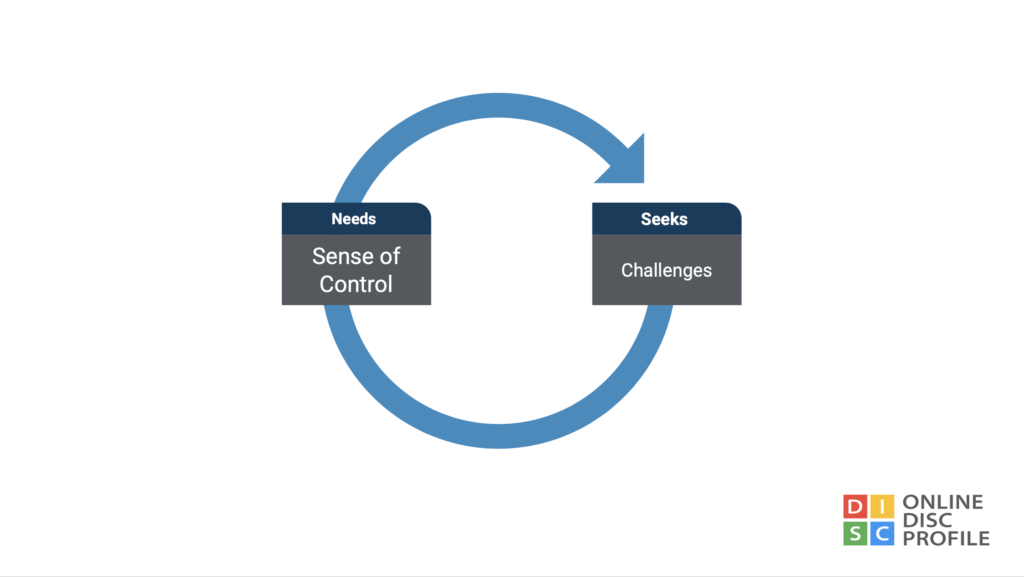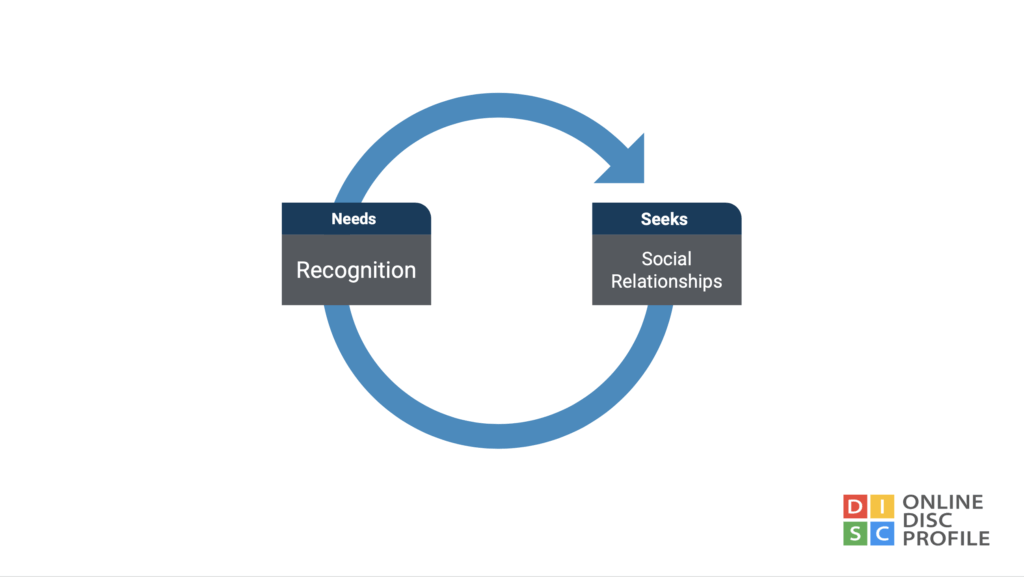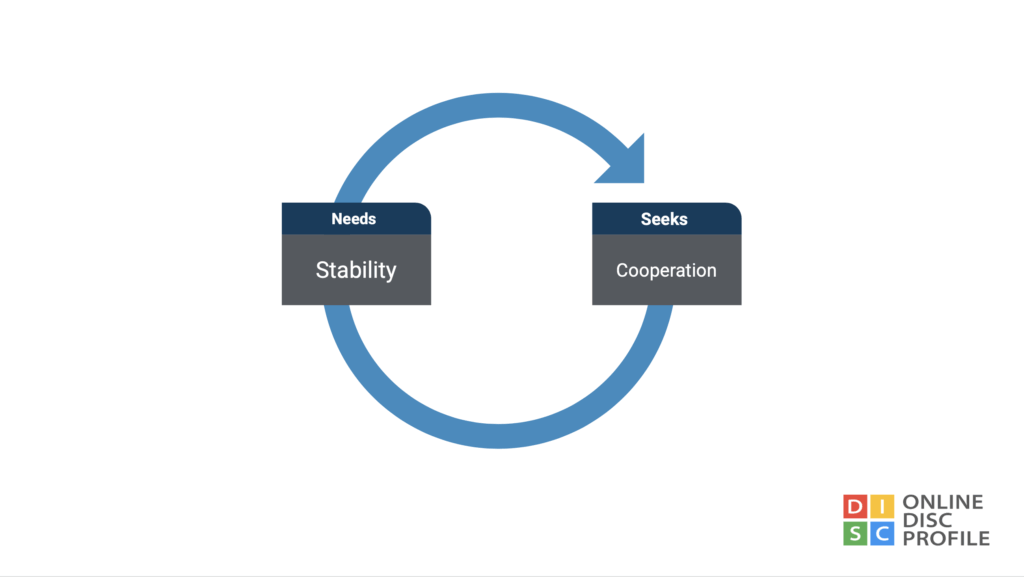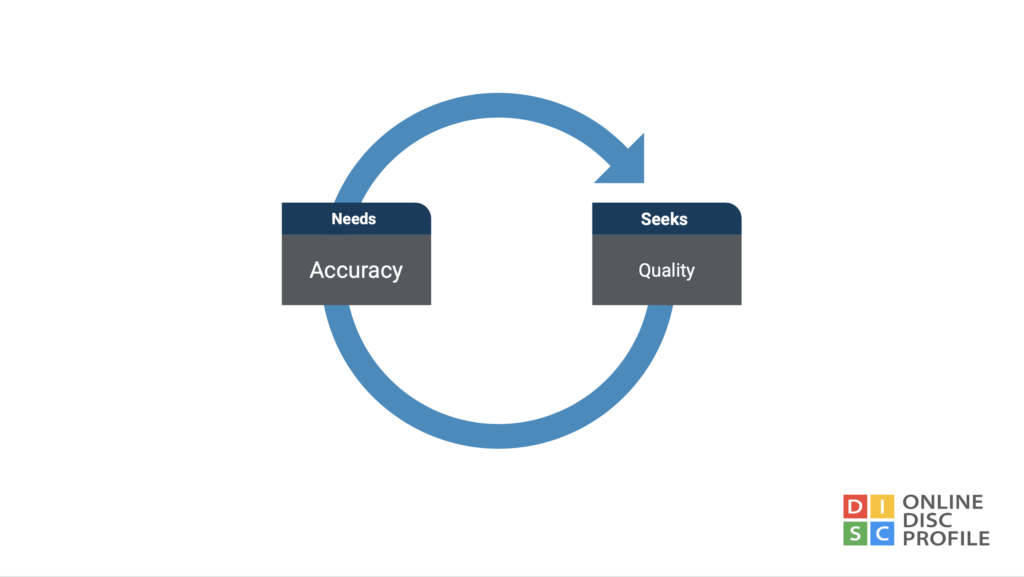How to improve communication using DISC styles
Adam Stamm
Managing Partner: Online DISC Profile

Getting your message across can be extremely difficult. DISC offers a decoder to help you identify your speaking partner’s motivations, needs, and stressors. With these insights, you can focus or clarify your message and speak towards the points that are most important to the person you are speaking with.
DISC allows you to better understand someone’s perspective, which can help you reach a mutual understanding faster.
In this article, I will outline tips for approaching each of the four primary DISC Styles. You can learn about all 12 different personality types and use these same concepts even more granularly.
Don’t worry—this article isn’t offering a malicious or sneaky way to trick someone into doing your bidding. Instead, it aims to help you build self- and social awareness of the needs of others and yourself through a rule called the Platinum Rule.
If you haven’t taken a DISC assessment yet, I want to encourage you to take our free DISC Profile to learn your style →
With that, let’s get started.
Table of Contents
- D-Type Communication Preferences
- I-Type Communication Preferences
- S-Type Communication Preferences
- C-Type Communication Preferences
- The Importance of Supporting Different Communication Styles
- Adapting your communication style
- Exercises for Improving Communication
- Getting Started with DISC to Improve Communication
D-Type Communication Preferences
To communicate effectively with this style, it’s essential to understand their deep-rooted needs. This style is passionate about taking on challenges. This passion makes sense from the perspective of their psychological need because it gives them something to gain ownership over.
This is the reason why their style is labeled Dominance.
As an example, a family member of mine is strongly aligned with the D-Style. If you mutter under your breath, “There is no way we can get this done,” they will jump into the project before you finish your sentence and take complete control to try to overcome the challenge.
They are a powerful ally when a challenge seems like it’s approaching failure. Engaging in these challenges allows them to fill their need for control and ownership.
Maintain Control to Overcome Any Hurdle

Another behavior affiliated with the D-personality style is the need to move fast. Like my family member, this style will jump into a challenge immediately.
However, this behavior can have negative consequences when more analysis is required. A person with this style has likely encountered situations in which they reacted too quickly when they should have moved more slowly.
A good friend of mine, who has the D-Personality type, was renovating their bathroom a few years ago. They had never taken on a project of this magnitude, and I was impressed that they were ready to tackle this new challenge.
Part of the project required removing and installing a new sink. On the day they started the project, they went downstairs to their basement, turned off the water main, returned upstairs, and started cutting the water line to the sink.
Unfortunately, they never checked whether the water was turned off.
In typical fashion, they were in a hurry to start the project and left with a flooded bathroom.
Hopefully, you can see how these needs for working quickly and working on challenges can sometimes be at odds. It’s important to remember these insights when approaching communication with this style, which we will cover next.
Tips for Communicating with the D-Style
We now know more about why the D-Style behaves the way they do. Here is an overview of this style, which we can use to identify ways to speak to them more effectively:
- Needs: Authority / Ownership
- Primary Focus: Problems / Challenges
- Areas of Growth: Impatience
- Fears: Being taken advantage of / lack of control
With these items in mind, here are some ways to approach someone with the D-Style in a few different communication settings:
How to overcome tension with this Style:
- Remember, this style loves challenges. Be direct with them about what concerns you and list your reasons. They will appreciate candor and directness as long as it’s not hostile. Bring clear and concise points about the issues you see.
- This style wants to find resolutions and hates when things are left open-ended. Work with them to find ways to solve problems. Engage in their need to overcome challenges by presenting issues as challenges they can help solve.
How to overcome tension with this Style:
- Because they need ownership, this style may not want to work on a team. When trying to get a person with this style to sign off on an idea or project, make it clear what their role is. If they are going to be involved, be very precise about what you want them to do – they may naturally start to create a checklist of things that need to be done. If you intend to have them support the project, bring a pre-made list of tasks they could help with, and review it with them.
- Allow this person to challenge your idea. Individuals with this style will likely stay grounded in realistic solutions based on their experience. If they are challenging an idea, ask them to provide their thinking. You will be impressed with how often they can help you avoid major issues because they can spot problems easily.
I-Type Communication Preferences
The I-Style has an extraordinary ability to enter any social situation and engage with anyone and everyone. They live for being around people. They are natural influencers because they create a friendly atmosphere.
Whenever I take a flight, I am always impressed by someone with this style. I have an S-Style (more on that later), and starting a conversation with strangers takes some of my energy. When I have an I-Style seatmate, I always enjoy the conversation and being in their presence.
In one instance, a person with this style I met on a plane figured out we both lived in South Philadelphia. He coordinated a time for us to continue talking at a nearby coffee shop/bakery when we both returned to Philadelphia. We are still friends today.
People with this style seek social interaction and create opportunities to fulfill their need for recognition and social approval as they engage with others.
Recognition by Engaging With Everyone

Similar to the D-Style, the ‘I’ Personality Type is highly motivated to take quick action. The good side of this combination is that they can be incredibly dynamic, making them great salespeople.
However, they may also come across as flighty or disorganized because they’ve agreed to do too much!
When my cousin, who has an I-Style, comes into town, he spends the entire trip visiting an incredible number of family members. He fits more visits into a day than I will in a year. He sometimes makes too many plans, and his visits are cut short to keep his promises with other family members.
Tips for Communicating with the I-Style
Hopefully, you will understand better why the ‘I’ personality type behaves like they do, and you have learned about their psychological needs. With these insights in mind, here is a list of items you should consider when speaking with someone with this style:
- Needs: Social Approval / Interaction
- Primary Focus: People / Relationships
- Areas of Growth: Disorganization / Impulsiveness
- Fears: Being left out / Loss of social approval
With this in mind, here are some tips on how you can speak and communicate with this style more effectively in a few different situations.
How to overcome tension with this Style:
- When someone feels someone is making them look bad, this can cause an emotional response. To avoid creating tension, taking constructive feedback to a private place is imperative.
- If a relationship gets tense with this style, I have found that people are often willing to overcome it if you approach them sincerely. Focus on keeping the conversation light while working through whatever issues occurred. They will appreciate the balance of having a difficult conversation with moments of levity.
How to get buy-in at work with this Style:
- This style is very optimistic, so if you are trying to kick-start an idea or project, you will receive a welcome conversation with this personality type. However, if you are trying to narrow down the focus of the work, make sure you bring facts and details that show how the changes will impact the longer-term goal and picture.
- While buy-in might be easier for this style than others, it’s important to ensure that those with this style clearly understand what’s expected of them. Make sure tasks are scheduled and outlined.
S-Type Communication Preferences
The ‘S’ personality type is my world, and my DISC style.
S-Styles are trying to bring order to a chaotic world. To accomplish this, they create systems and bring calm to their environments through listening and patience. After all, expressing highly charged emotions is harder when your conversation partner is calmly listening.
A good friend who is also an ‘S’ personality type is well known for asking many deep and reflective questions. She naturally pulls people in by wanting to learn more about them. I’ve watched her patiently listen to someone drone on and on about their work. She never lets on that the topic could be incredibly boring because she is interested in learning more about it and their connection to it.
Learning more about someone and their work helps my friend create a more stable and secure environment. She can bring more order to her world by facilitating cooperation amongst new and old friends or between herself and others.
Create Stability Through Cooperation

This style, in an effort to fulfill their psychological need for stability, can get stuck in paralysis.
Another good friend stayed locked in a lease for an apartment they never used because they didn’t want to upset the landlord by asking to break their lease. Their fear of creating a loss of harmony prevented them from asking the question.
In my life, I’ve come to recognize that I agonize over breaking plans with someone even when I need to break a plan for appropriate reasons. The fear of creating disharmony can feel almost painful, and I dragged my feet on reaching out and explaining what was happening.
Tips for Communicating with the S-Style
Hopefully, you have a better understanding of the psychological needs that motivate the behaviors of the S-Personality type. When communicating with this style, keep these insights below in mind:
- Needs: Stability
- Primary Focus: Consistency
- Areas of Growth: Overly accommodating/avoid change
- Fears: Loss of stability and security
With this in mind, here are some tips on how you can speak and communicate with this style more effectively in a few different situations:
How to overcome tension with this Style:
- This style values stability and harmony with people. If a decision is made without considering its effect on people, there will be tension. The amount of tension will depend on the situation, but even small situations like not having enough seats for everyone at a gathering could cause a blow-up if there are other issues with the relationship.
- If there is tension with this style, you may not even hear from them about it. You may find they are avoiding you or discussing what is causing the tension. Remember, if you feel like the conversation with them is off, they may avoid bringing something up that is bothering them.
How to get buy-in at work with this Style:
- This style may initially bristle at a new change or proposal until they can understand its effects. With this in mind, present new ideas or proposals and allow for a discussion and time to consider everything they learned. If timing is of the essence, ensure you have thought through how any changes will affect anyone involved.
- This style might not recognize their emotional responses to change. It’s also important to ask them directly what they are feeling. By getting them involved in the discussion rather than presenting something they need to accept on face value, you can help them process potential reasons why they are skeptical of changes.
C-Type Communication Preferences
A long-time employee of ours is strongly inclined C-style. For years, he has helped ensure that all of our physical packages reach their destination on time.
A few years ago, I received a message from a different shipping company offering discounted shipping. In a classic ‘S’ type way, I tried to make the connection to our C-Style employee and asked if he would like to speak with them.
He gave me a succinct two-word response: “No way.”
This shipping company was well-known for poor service and mishandled packages. Our employee would not consider working for a company that would lower the quality of the service we provided—even in the often-forgotten world of shipping.
In this case, our employee was quick to respond because he had already done his due diligence by researching every shipping company and the services they offer. In other requests I have made to him, he takes hours to answer questions that I think are fairly straightforward and don’t require much thought. He is focused not just on providing “an answer,” but on giving the correct answer.
Ensure Accuracy Through Quality Control

Similar to the ‘S’ Personality Type, the C-Style can be resistant to change. They fear being unable to produce high-quality work or losing their expertise in a certain area, which will cause them to resist change.
Our employee with a high C-Style resisted our efforts to update our website to allow for automated shipping quotes. While this technology is used everywhere, we didn’t use it because he preferred to create the quotes himself manually. Once we showed him that he could double-check the amounts, he was aligned with the change.
Without the knowledge of DISC, his resistance to change could look like he is just being difficult or a Luddite. At his core, he just wants to ensure that his service is exceptional.
Tips for Communicating with the C-Style
Hopefully, you now better understand the psychological needs that motivate the behaviors of the C-Personality type. When communicating with this style, keep these insights below in mind:
- Needs: Showcasing expertise and producing high-quality work.
- Primary Focus: Details and procedures
- Areas of Growth: Overanalyzing or being overly critical
- Fears: Criticism, or being wrong
With this in mind, here are some tips on how you can speak and communicate with this style more effectively in a few different situations:
How to overcome tension with this Style:
- Like the S-Style, the C-Style may seem prickly, but they will likely avoid outright confrontation. If tension is brewing under the surface, ask them if they want to discuss a past issue or confrontation, or let them recommend a time to discuss it.
- Individuals with this style may need time to discuss sensitive issues. Consider sending them a text or an email with what you want to talk about and allow them time to think about it.
How to get buy-in at work with this Style:
- Individuals with this style want to be right. Not in a narcissistic way – (although narcissism can affect any person/style), they want to ensure they are accurate. If you are proposing something they don’t know much about, make sure you bring details and research so they can understand your position better. Next, give them time to consider what you have presented.
- This style can bring some much-needed skepticism. Because they want to ensure accuracy and quality, allow them to dig into why something might not work. Bring them into the conversation when this is needed and appropriate to ensure an idea is viable. They will buy into it because they helped the process of bringing a good idea together.
The importance of supporting different communication styles
DISC insights can be seamlessly used in workplaces or organizations.
By understanding the psychological needs of others and applying the Platinum Rule, you can support the communication needs of each DISC Style, making you more effective in accomplishing your goals.
Here are a few ways this can work within your team or organization.
Use DISC to improve teamwork
Meetings take up most of our days. Often, meeting attendees feel that the meeting wasn’t a good use of their time.
Meetings can be much more effective when DISC insights are applied. When meetings improve, teamwork will improve.
Here’s what team leaders can do to run better meetings using insights from DISC:
- Take a DISC Leadership Assessment
- Run a DISC Report for Teams
- Determine if your team leans towards one particular style or is a blend of all styles. Structure the meeting to make it impactful for everyone:
- Create an Agenda that is agreed upon before the meeting starts. Ensure it’s followed. (D-Style)
- Allow 5 minutes before the meeting for people to catch up with each other (I-Style)
- Give everyone a chance to be heard (S-Style).
- Share all relevant information before the meeting (C-Style)
These simple steps will make your meetings much more effective and teamwork will flourish!
Use DISC to Help Businesses Communicate Effectively
An understanding of DISC can help businesses communicate better with external partners as well. When your teams or leaders understand and apply concepts of DISC to their external communication, the business communication will be much more effective.
Here are a few steps businesses can take to get started:
- Determine your external partners’ DISC style (or have them take our free DISC assessment).
- Take a moment before your next meeting to review your plan for how you can better communicate with them:
- Provide a high-level overview without getting into the nitty-gritty details (D-Style).
- Invite them to collaborate on ideas within a structured format (I-Style)
- Focus on how ideas or initiatives will affect all stakeholders (S-Style)
- Provide all available information before each meeting (C-Style).
These simple steps will help your business communicate more effectively.
Adapting your communication style
Part of our DISC Training workshop centers on adapting communication to meet the needs of the other person.
The first lesson is understanding that this process isn’t a form of manipulation. Instead, it a higher sign of respect towards the other person. You are putting their needs first and communicating with them in the way they prefer.
This process requires knowledge of each of the 12 Personality Types. For Managers, it can be eye-opening when they learn how to have more effective discussions with their direct reports.
The process is fairly straightforward:
- Determine your talking partners’ DISC Profile.
- Use language that matches that particular style
- D = Be Direct
- I = Be Engaging
- S = Be Supportive
- C = Be Correct
- Listen to how they respond and adjust your language to better fit their needs.
It’s important to note that we are not just a single style but a blend of DISC Styles. The person who created DISC Theory, William Moulton Marston, described the image of DISC as a color wheel on which you could see all of a person’s personality colors, but one color in particular was more visible than the others.
As you communicate, focus on listening to how your talking partner responds and try to engage with them in a way they prefer..
Communication Exercises
Improving communication isn’t something that happens overnight. It’s a process that we all must practice regularly. Below I’ve outlined a few discussion topics and questions that you can review with a partner or with a group to improve your communication.
Communication Exercises for 1:1 Partners
- What are your communication pet peeves?
- Listen to which pet peeves align with their DISC style, or if there are some surprising ones that don’t match their style at all. Remember, DISC is just a guide to open up the conversation!
- What assumptions might we be making about each other?
- This question will allow you to build trust as long as you are both truthful with each other. Make sure you don’t get defensive if the topic turns towards specific behaviors that are sensitive.
- How do you best feel heard and understood?
- Again, listen to see if anything is stated that aligns with someone’s DISC style – it will make it very easy for you to meet these needs in the future.
Communication Exercises for Groups
- What is one thing our group currently does well?
- Write down all answers and see if there are any commonalities.
- What is one area where you believe our group’s communication could be improved?
- Again, write down all answers and see if there are any commonalities.
- How comfortable do you feel sharing dissenting opinions or challenging ideas with our group?
- Listen for areas where trust is lacking. If a group doesn’t have a baseline of trust, this question will be impossible to answer.
How to develop communication with DISC
Many companies use DISC because it’s easy to deploy and remember.
We offer free DISC Profile that allows anyone to learn their Style. This report can be upgraded to learn more about your personality and you can sign-up for coaching sessions to gain the help of a certified coach.
To help organizations or teams start using DISC, we offer a live, self-paced DISC Certification course and a live, virtual 2-day course.
Still have questions about how to use DISC? Fill out the form with your question to get support from our team!
"*" indicates required fields
